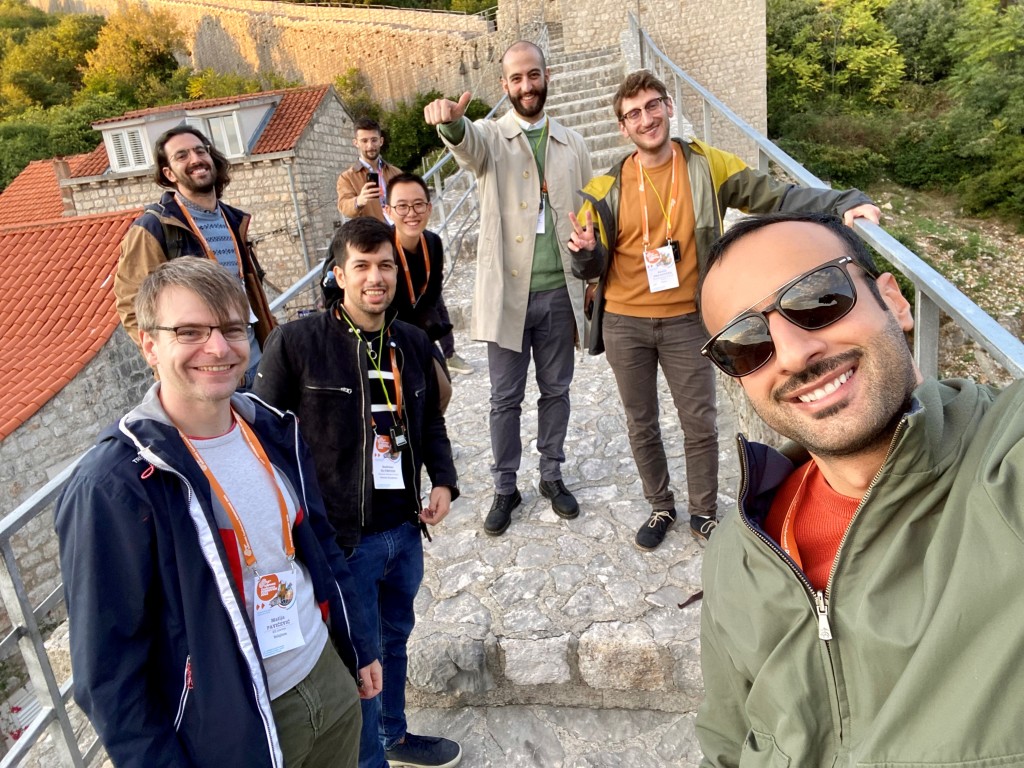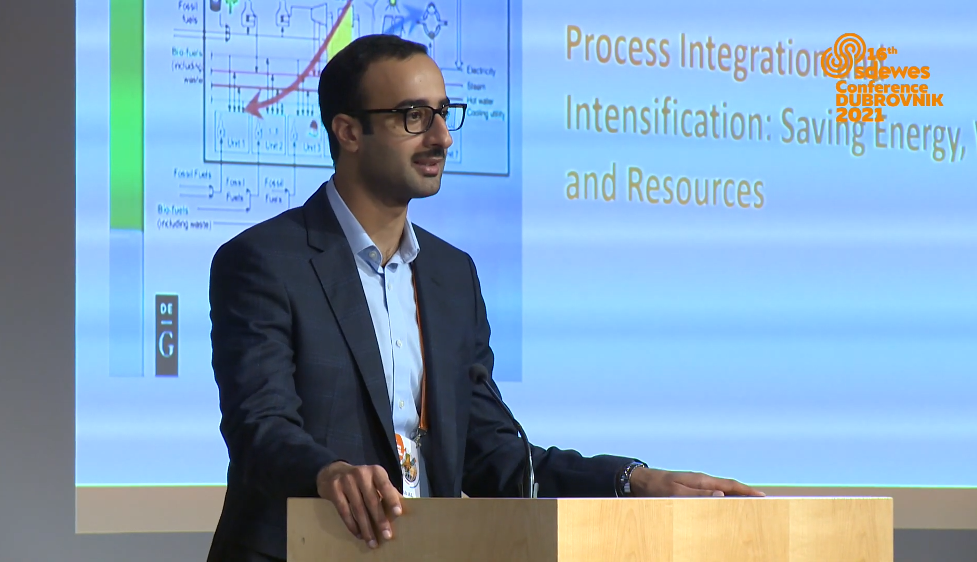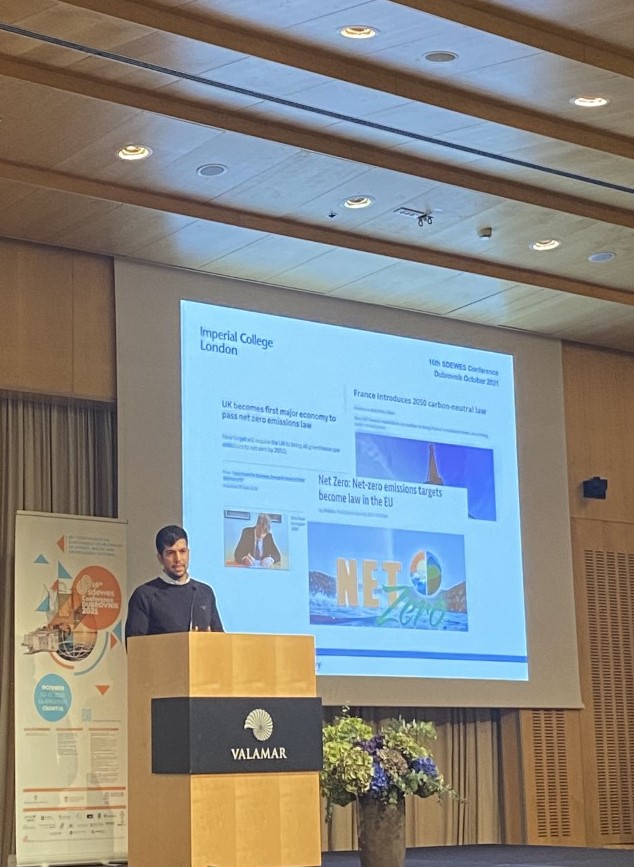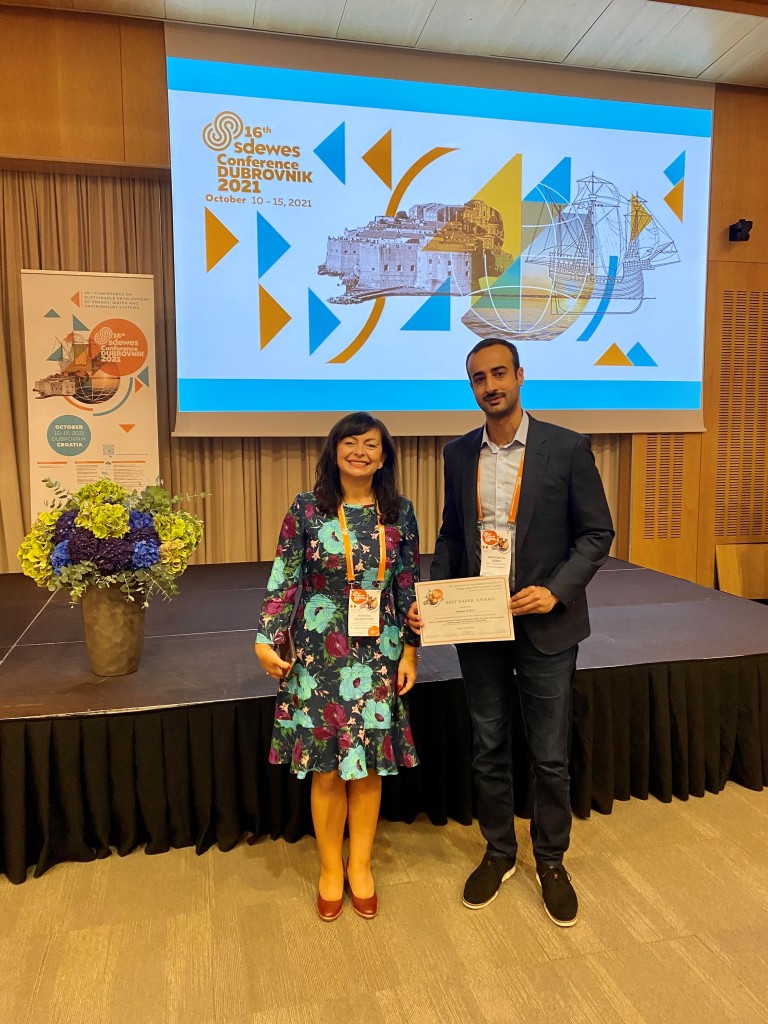A collaborative paper on flexible nuclear power plants written by the Project 1 and Project 2 teams in the IDLES Programme has won a Best Paper prize at a recent international conference. Abdullah Al Kindi, a PhD student in the Clean Energy Processes (CEP) Laboratory in the Department of Chemical Engineering, accepted the award on behalf of the team at the 16th Conference on Sustainable Development of Energy, Water and Environment Systems (SDEWES), held in Dubrovnik. Also at the conference and representing the latest IDLES research was fellow PhD student and CEP lab member Andreas Olympios, who presented his work in the area of domestic hydrogen- and electricity-driven technologies. We caught up with them both when they returned.

Abdullah, could you talk a bit about the award and the team behind the paper?
The paper is a fantastic outcome of a very fruitful collaboration between the CEP lab and colleagues in the Department of Electrical and Electronic Engineering, based across Projects 1 and 2 of IDLES. There are typically around 670 paper submissions to the SDEWES conference so we are very proud to be named as one of the best!
Co-authored with Dr Marko Aunedi, Dr Marco Pantaleo, Professor Goran Strbac and Professor Christos Markides, the paper describes a thermo-economic assessment of flexible nuclear power plants in the UK’s future low-carbon electricity system. Combining expertise allows us to have a better understanding of the status and the current challenges of nuclear power as well as to evaluate the available upgrading options in order to make nuclear power a cost-effective option in the UK’s future low-carbon energy system.
Moreover, this combined expertise made it possible not only to investigate and analyse nuclear power plants from a technology perspective but also to explore and evaluate their performance in a whole-electricity system that has a high penetration of renewables such as wind and solar power.
What does your paper investigate?
We examine coupling nuclear reactors with thermal energy storage, which can promote a more continuous and efficient operation of nuclear power plants, while at other times allowing their operation to become more flexible and cost-effective. We performed a thermo-economic investigation, which combines both performance and costs, of retrofitting and upgrading nuclear power plants with the addition of thermal energy storage systems and secondary power generators. We considered the case of an existing 1610-MWel nuclear power plant in the UK, with known characteristics.
And what did you find out?
We found that the modified configuration allows the plant to generate up to 2130 MWel during peak load, representing an increase of 32% in its nominal rated power. The gross whole-system benefits of operating the proposed configuration are also quantified for several potential scenarios that may develop for the UK’s low-carbon electricity system.
In terms of costs, replacing conventional with flexible nuclear plants is found to generate system cost savings between £24m/yr and £89m/yr. At an estimated cost of added flexibility of £43m/yr, the proposed flexibility upgrade therefore appears to be economically justified for a wide range of low-carbon scenarios, provided that the number of flexible nuclear power plants in the system is small.

Did you have some interesting conversations on the back of your presentation and have you brought back new ideas to apply to your work?
I had a few interesting questions after the presentation and the main one was regarding my thoughts about nuclear. In my opinion, I think nuclear power still has a great future since it plays an important role in meeting the global low-carbon emission targets and in securing electricity supply, especially with the high intermittency of renewables.
This is why the UK government is currently investing in nuclear power by constructing new nuclear power stations and funding nuclear-power-related projects. Regarding the new ideas, one idea is to extend the use of nuclear power to provide heating and electricity at the same time. We are planning to investigate the thermodynamics and the economics of this option, with the hope of finding some interesting results.
Andreas, could you tell us a bit more in general about the conference and the work you were presenting there?
The annual SDEWES conference brings together a broad range of researchers, scientists and experts to meet, discuss and disseminate new ideas on sustainable development of energy, water and environment systems, including innovative technologies, methods and policies. It was therefore a great chance for us to present the work we are conducting within the IDLES programme, which aims to provide evidence and tools to the academic, industrial and policy-making communities for the long-term strategic planning and operation of integrated energy systems.
In total, three papers originating from IDLES research featured, including the one I presented on the techno-economic comparison of hydrogen- and electricity-driven technologies for the decarbonisation of domestic heating. Although the potential of hydrogen in the context of heating decarbonisation has been explored in the past, a comprehensive comparison of electricity- and hydrogen-driven domestic heating options was lacking in literature.
In this work, we developed a thermodynamic and economic methodology to assess the competitiveness of a domestic-scale absorption heat pump driven by heat from a hydrogen boiler compared to a standalone hydrogen boiler, a classic vapour-compression heat pump and district heating, all from a homeowner’s perspective.

What would you say is the most important finding in your research and why does it matter?
The economic competitiveness of different domestic-heating options depends on the future retail prices of electricity, hydrogen and district heating. Our research shows that in order for hydrogen-driven technologies to be competitive, the future price of hydrogen for domestic end-users should be below about 0.12 £/kWh. Otherwise, electrification and the use of vapour-compression heat pump will be preferred. The analysis provides evidence to assess the role of electrification and hydrogen in future domestic heating and thus support energy policy.
How did it feel being back at a conference in person after so long joining events remotely?
Remote working has affected all of us in different ways. It has meant higher flexibility and zero commute, which resulted to more time to spend with loved ones or do things we like (e.g., exercise). Despite this, remote working has made us value face-to-face communication more than ever.
Attending the 16th SDEWES conference after so many remote events was a privilege because we felt the sense of sharing a common mission with other researchers, something that is difficult to feel in remote events. Spending time with colleagues working towards similar goals creates a sense of purpose that reinforces our motivation to continue contributing towards energy-transition goals through our research.
Remote interactions are all scheduled, but strong relationships and collaborations often start with short informal conversations after a presentation or during a casual coffee break. It was fascinating to see that conference attendees from all over the world were so excited that they had the chance to finally interact in a sustainable-development-focused in-person event!
Finally, to both of you, what was your highlight of the conference?
We had a really enriching experience in the SDEWES conference, especially after the difficult times of staying and working from home. Attending the conference gave us the opportunity to meet other young, passionate, and talented researchers working in similar research fields and projects all over the world. Getting to know these people with whom we share common visions opens doors for future collaboration between our research group and other groups, research centres and industrial partners.
We should also highlight the impressive natural beauty of the city of Dubrovnik. It is a city of rich history and breath-taking sceneries, which we will definitely visit again in the near future!
We would also like to thank our supervisor and leader of the CEP laboratory, Professor Christos Markides, for giving us the chance to work in these successful projects and participate in such an exciting event. His presence at the conference and his continuous support were key to make SDEWES 2021 an unforgettable experience.

